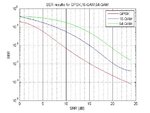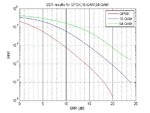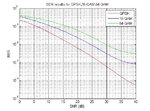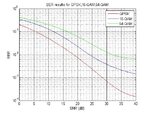WUID
Member level 2
looking for good tutorial on multipath channel...
gonna check this new lines of code.
Is the symbol interval is the same for all types of mapping 4-qam,16-qam,64-qam =
Code:
deltaF = ofdmBW/N; % Bandwidth for each subcarrier - include all used and unused subcarries
Tfft = 1/deltaF; % IFFT or FFT period = 3.2us
Tgi = Tfft/4; % Guard interval duration - duration of cyclic prefix - 1/4th portion of OFDM symbols
Tsignal = Tgi+Tfft; % Total duration of BPSK-OFDM symbol = Guard time + FFT periodhow much frameNb you used ?
Last edited:



